
Intellicast S5E20 – More Acquisitions In The Sample Industry
June 17, 2022
What I’ve Learned from Past Recessions to Help Navigate a Potential New One
June 28, 2022Elon Musk recently released a bold return-to-office statement saying he wanted Tesla and SpaceX employees to return to the office full-time. As EMI celebrated its first anniversary of a hybrid work model the same week, we thought it would be a great time to look at some of our recent research-on-research findings regarding returning to the office full-time post-pandemic.
Pre-Pandemic Work Environment
First, let’s look at typical work environments prior to the COVID-19 pandemic. Overall, we see that 43% of people worked in an office setting before the pandemic, while only 16% worked from home.
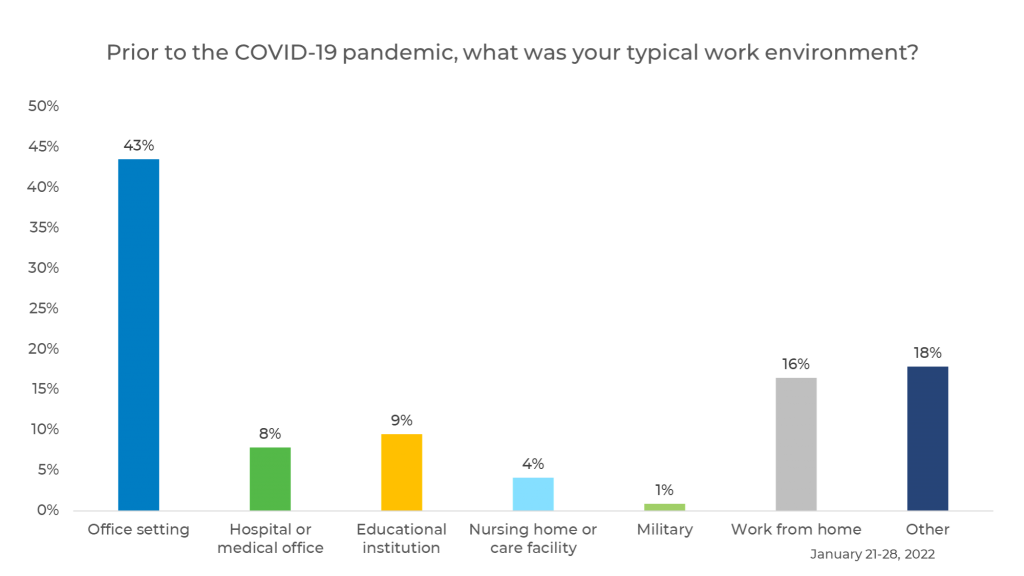
When looking at response by panel, we see that there is up to a 28-point difference as seen between Panels L and O in respondents who worked in an office setting pre-pandemic.
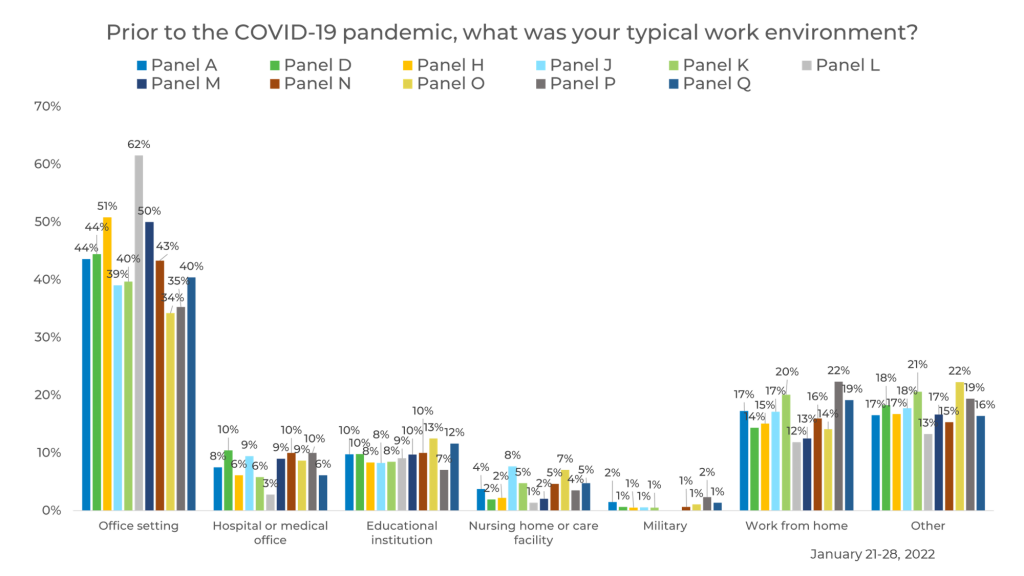
Back to the Office
Next, we looked at respondents who have gone back to the office since the beginning of the pandemic. Overall, we see the majority of people have returned to the office in some form with 44% more people back in the office than not.
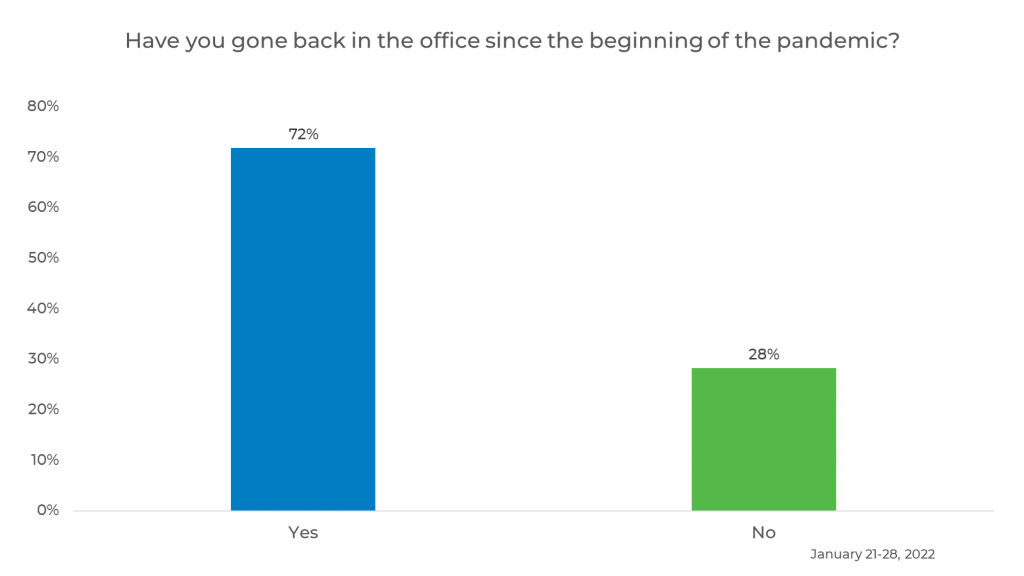
When looking at responses by panel, we can see up to a 13-point difference as seen between Panels H and D in respondents who have gone back to the office since the beginning of the pandemic.
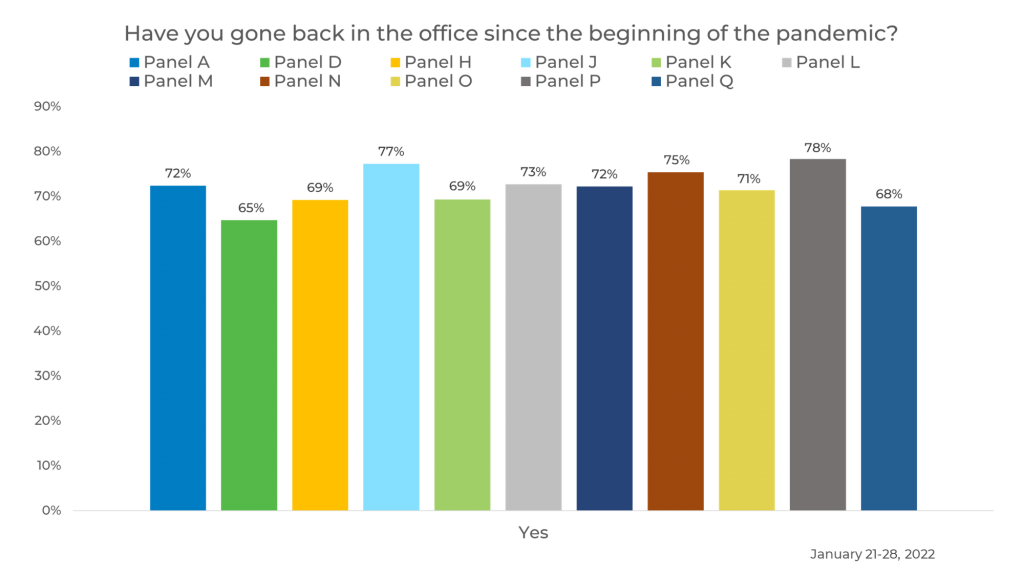
Returning to Office
We also looked at respondents who plan to return to the office. Overall, people are 18% more likely to say they do not plan to return to the office than those who do. Twenty-four percent are still unsure if they plan to return.
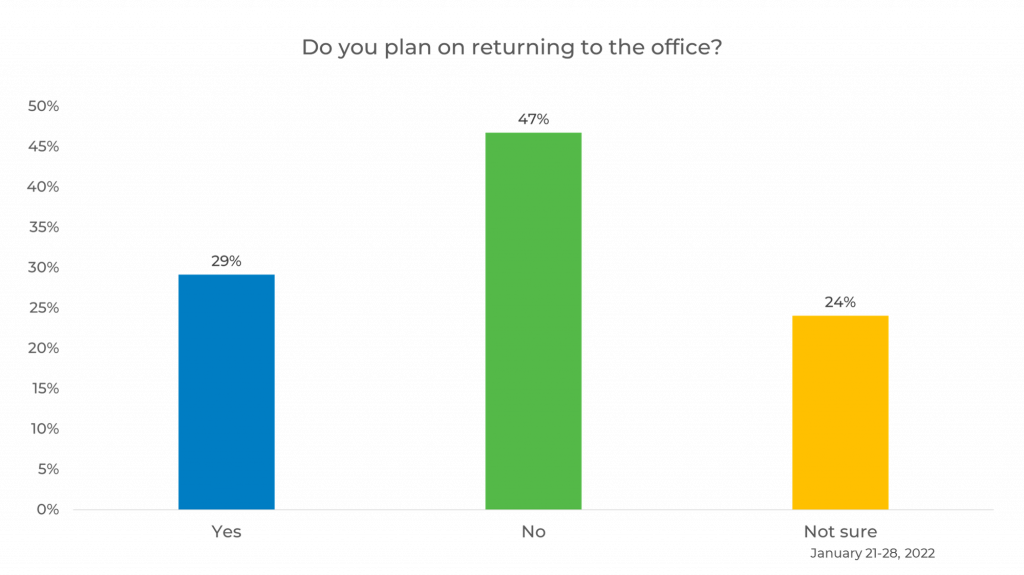
Respondents with incomes of $150,000 or more are least likely to plan to return to the office. This is likely due to those with a higher income having a greater ability to work from home than those with lower incomes. Many lower-income professions don’t offer the ability to work from home.
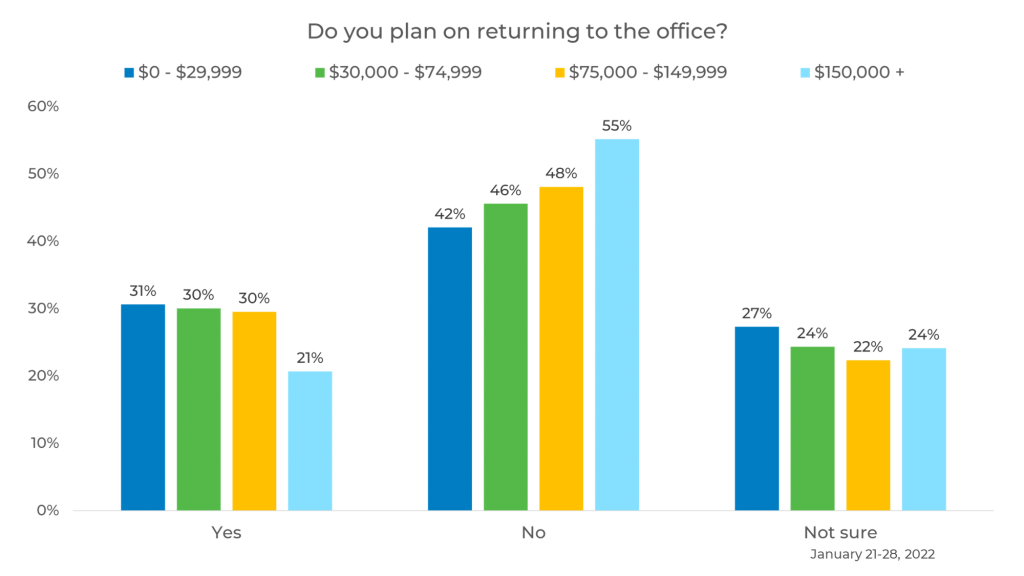
When looking at responses by panel, we see up to a 38-point difference between panels as seen between Panels M, P, and Q in respondents who plan to return to the office.
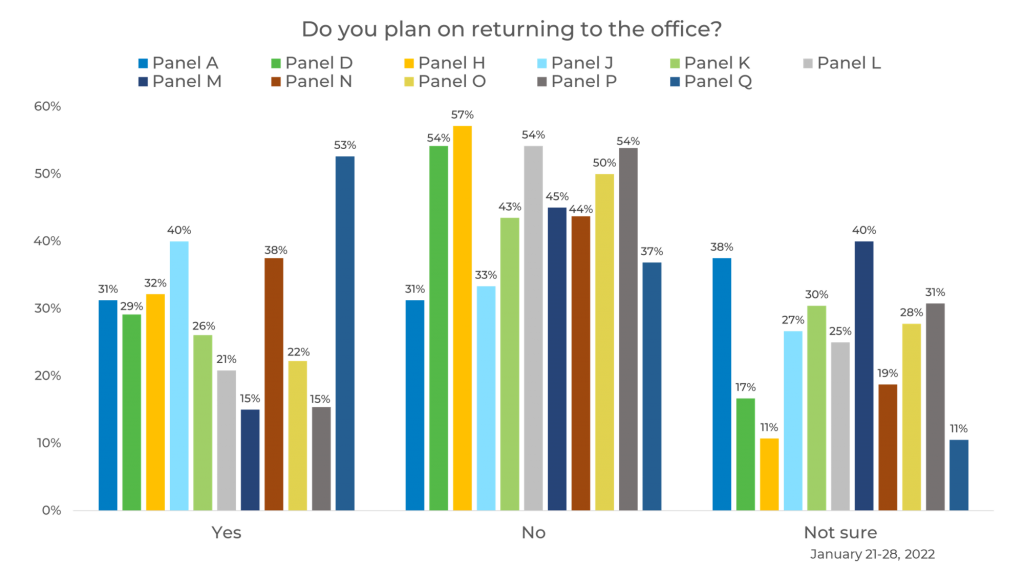
Comfort with Return-To-Office
Additionally, we looked at respondents’ comfort levels surrounding going back to work in the office. The majority of people are comfortable going back to the office, with only 22% of respondents saying they are either somewhat or extremely uncomfortable returning.
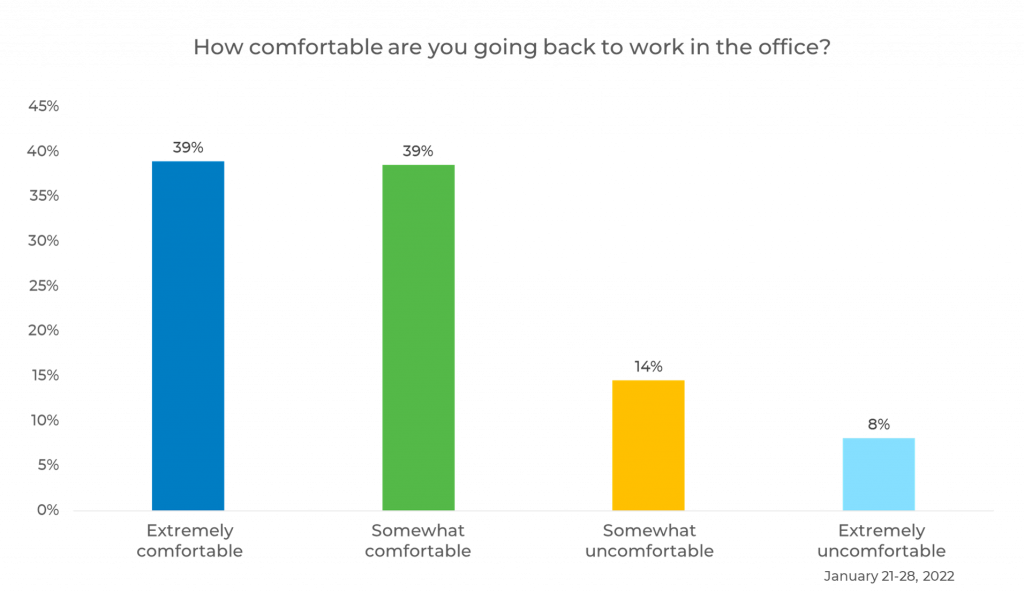
Respondents age 18-44 are more comfortable returning to work in the office than those age 45+. This is interesting as it might be thought that younger respondents would be more accustomed to and interested in working from home than older respondents who have spent most of their time in the workforce with in-person working models.
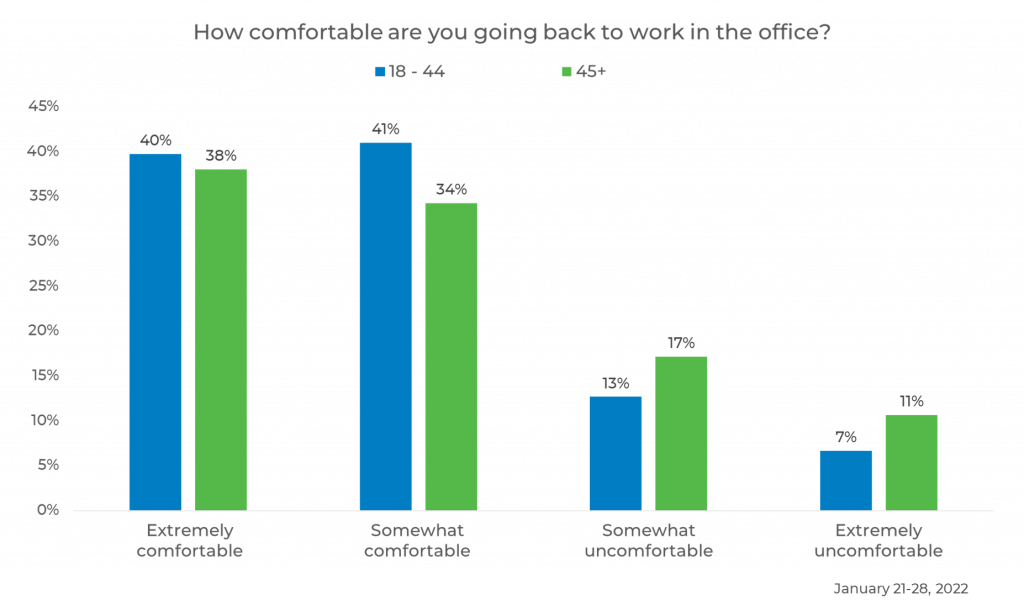
When looking at differences by panel, we see up to a 22-point difference as seen between Panels A and N in respondents who are extremely comfortable with returning to work in the office.
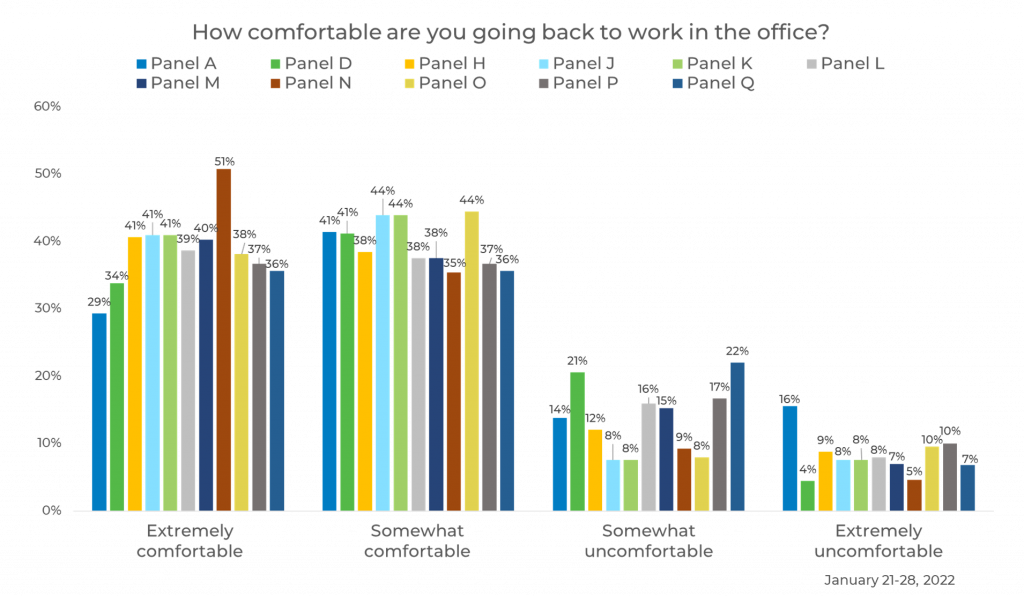
Working from Home
Finally, we asked respondents about their experience working from home. People are most likely to say they are sometimes distracted while working from home, followed by those who say they are rarely distracted, never distracted, and often distracted, respectively.
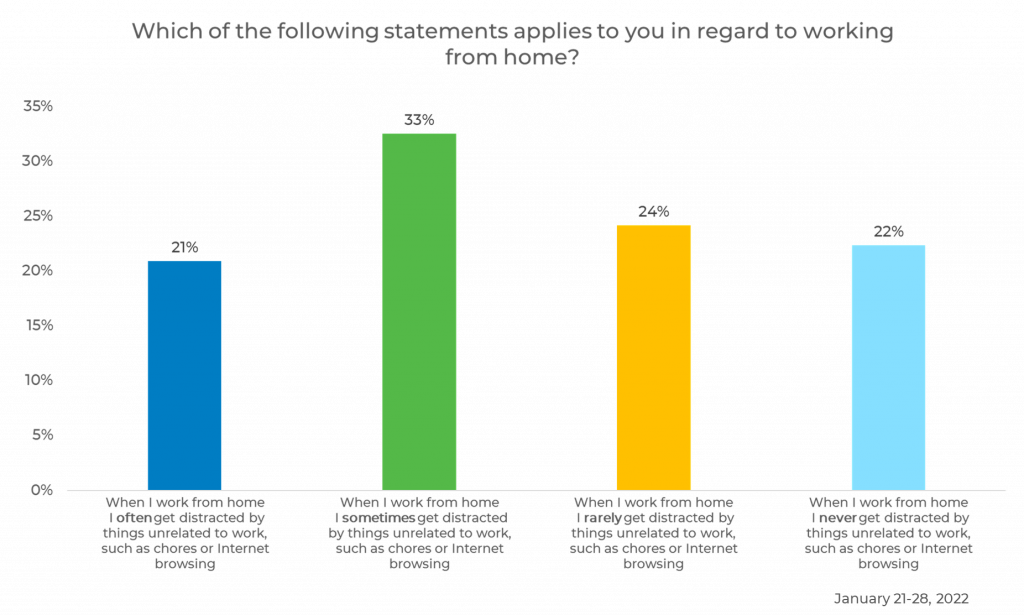
Respondents with incomes of $150,000+ are most likely to say they often get distracted when working from home, while respondents with incomes of $0 – $29,999 are most likely to say they never get distracted when working from home.
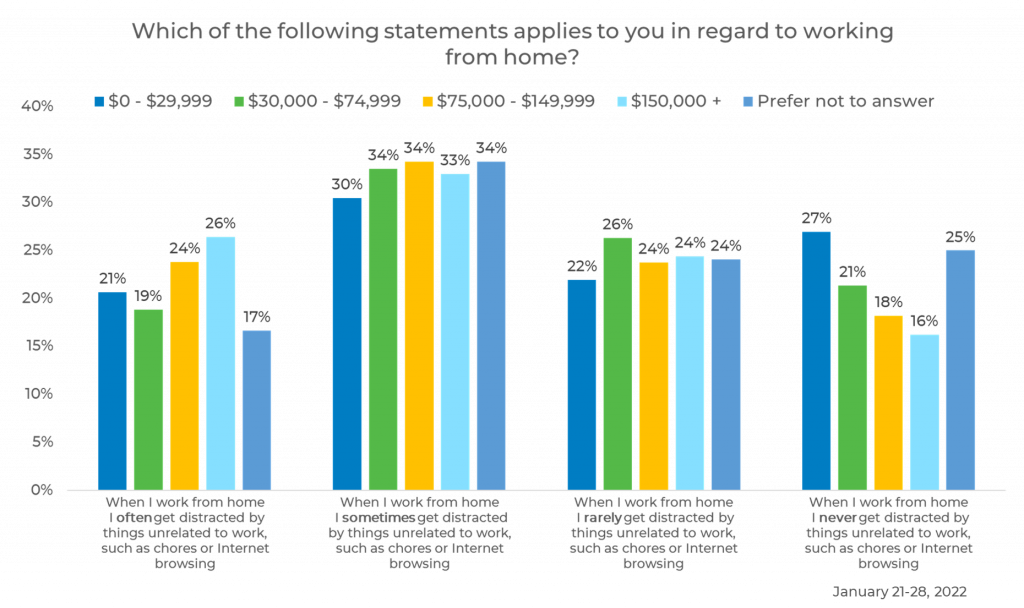
When looking at differences by panel, we see up to a 14-point difference as seen between Panels A and L in respondents who sometimes get distracted when working from home.
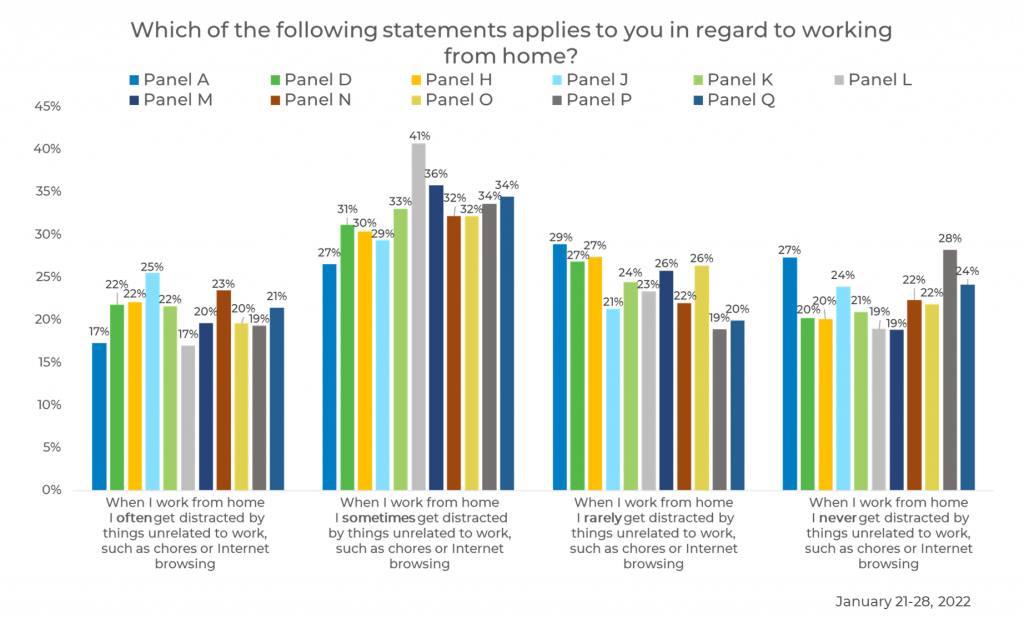
The working experience has certainly changed since the start of the pandemic, especially for those of us who do a majority of our work from a computer. However, we all have to find what works best for us whether we’re fully remote, working hybrid, or back in the office full-time.
To learn more about hot topics like this and to better understand why panels are different, download our annual report, The Sample Landscape: 2022 Edition.




